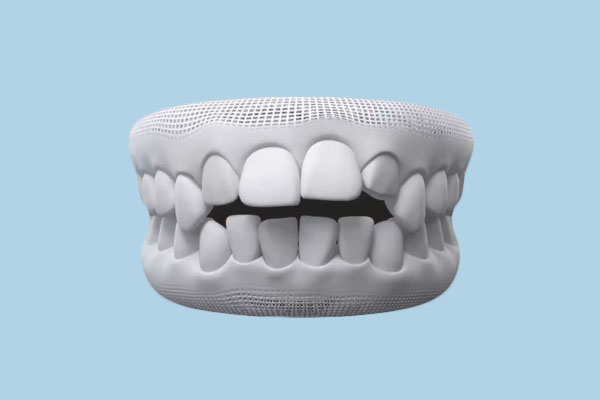Contents

Dental Open Bite: Causes, Consequences, and Solutions at Any Age
A dental open bite is a malocclusion characterized by a lack of contact between the opposing teeth when the jaws are closed. While it can affect different areas of the dentition (anterior, posterior, lateral), it always requires appropriate management to restore a functional and aesthetic bite. Discover everything you need to know about this orthodontic anomaly, its origins, its different types, and the existing treatments to correct it, from childhood to adulthood.
What Treatments Correct an Open Bite in Adults?
It is never too late to treat a dental open bite, although management is simpler and faster when done during growth. In adults, different therapeutic options can be considered depending on the severity of the malocclusion:
Orthodontics for Adults
In cases of mild to moderate open bite, wearing an orthodontic appliance allows for the gradual repositioning of the teeth to close the abnormal gap. Several techniques exist, including traditional braces and clear aligners.
Orthognathic Surgery for Adults
When the open bite is very significant and/or associated with a severe skeletal anomaly, maxillofacial surgery may be necessary in addition to orthodontics. It consists of repositioning the jaws into a more functional and aesthetic relationship, after pre-surgical orthodontic preparation.
Are Clear Aligners Effective for Treating an Open Bite?
Clear aligners, also known as "invisible braces," are an excellent solution for correcting a dental open bite in adults. Their mode of action is similar to that of fixed appliances, but with many advantages like discretion, comfort, and easier hygiene.
Managing a Child's Dental Open Bite
In children, a dental open bite is often linked to functional factors (thumb sucking, atypical swallowing, mouth breathing) that disrupt jaw growth and tooth eruption. Early intervention is essential to interrupt these harmful habits and promote harmonious arch development.
Functional Education
Interceptive treatment aims to eliminate the dysfunctions causing the open bite by re-educating the position of the tongue, lips, and swallowing patterns, often with the help of a speech or myofunctional therapist.
Palatal Expansion
When the open bite is due to an insufficient width of the maxilla (narrow palate), a fixed expansion appliance may be indicated to widen the transverse dimension and create space for the tongue. This treatment should be done before the end of growth for optimal effectiveness.
Tongue Re-education
In cases of a low tongue posture or tongue thrust, re-education exercises are implemented to correct atypical swallowing and mouth breathing.
What is the Cost of an Open Bite Treatment?
The price of orthodontic treatment to correct an open bite depends on several factors: severity, type of appliance, duration of treatment, etc. On average, you can expect to pay between $3,000 and $8,000 or more. Only a personalized quote will give you the exact cost.
Dental Open Bite: Definition and Different Types
A dental open bite is defined as a lack of vertical contact between opposing teeth when the arches are in occlusion. We distinguish between an anterior open bite (affecting the incisors and canines) and a posterior open bite (concerning the premolars and molars).
What Are the Causes of a Dental Open Bite?
The origins of an open bite are multiple and often intertwined, including functional factors (thumb sucking), dental factors (occlusal interferences), and skeletal factors (jaw growth discrepancies).
What Are the Consequences of an Untreated Open Bite?
If not corrected, a dental open bite can have functional, aesthetic, and psychological repercussions:
- Chewing difficulties
- Speech disorders
- Premature tooth wear
- Periodontal problems
- Aesthetic prejudice and loss of self-confidence
Conclusion
A dental open bite is a common malocclusion that can have multiple origins. Untreated, it can lead to various disorders. Early detection and management are essential. Thanks to advances in orthodontic techniques, it is now possible to treat an open bite at any age, comfortably and discreetly.
FAQ About Dental Open Bite
Does a dental open bite correct itself spontaneously?
In a young child, an anterior open bite is physiological and usually corrects itself with the eruption of the permanent incisors. But after the age of 6, a persistent discrepancy requires an orthodontic opinion.
What is the best treatment for an open bite?
The choice of treatment depends on the type of open bite, its severity, and the patient's age. In children, functional re-education and interceptive orthodontics are often indicated. In adults, wearing a fixed appliance (braces) or clear aligners can effectively correct most open bites.
